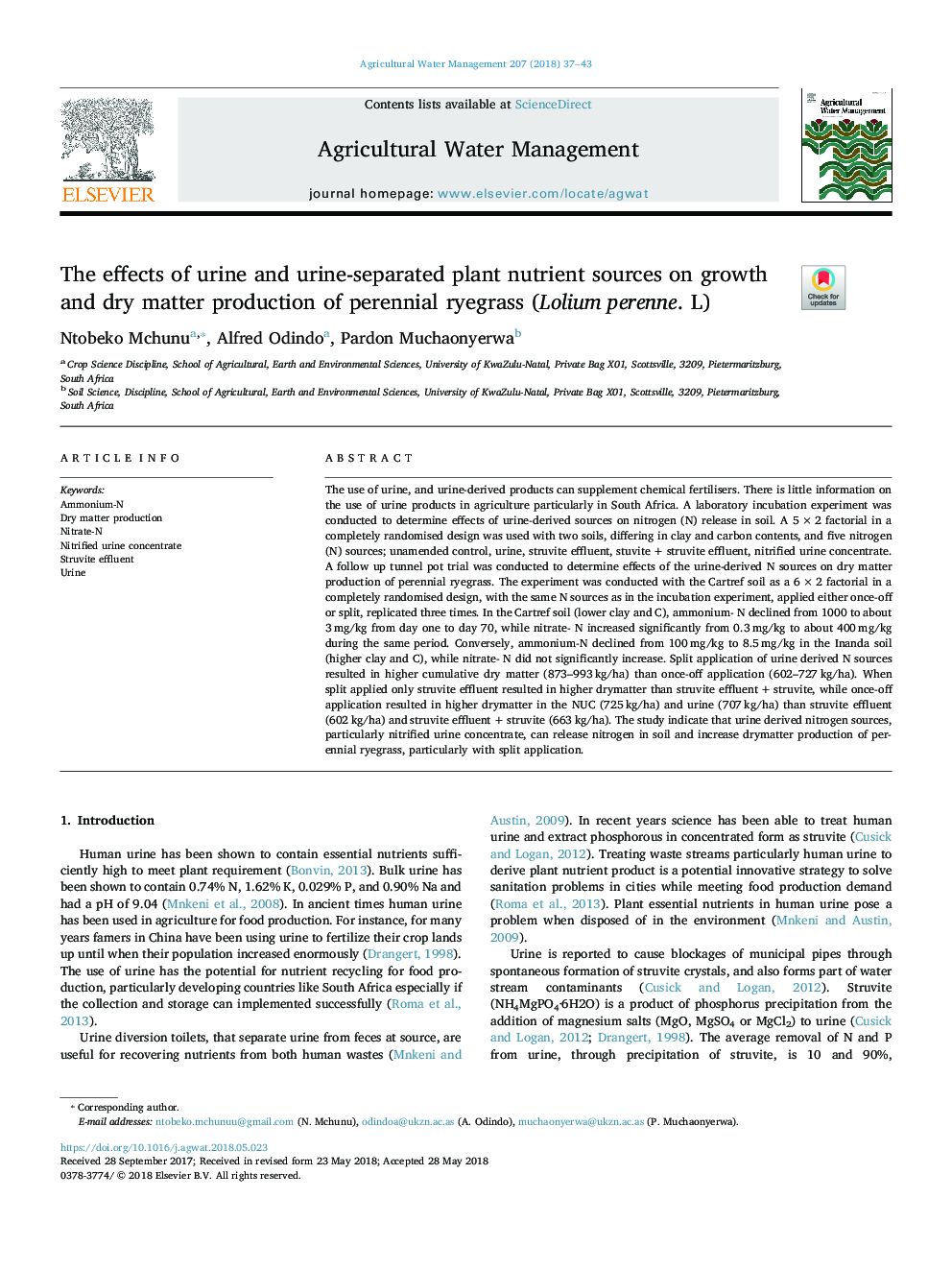| Article ID | Journal | Published Year | Pages | File Type |
|---|---|---|---|---|
| 8872827 | Agricultural Water Management | 2018 | 7 Pages |
Abstract
The use of urine, and urine-derived products can supplement chemical fertilisers. There is little information on the use of urine products in agriculture particularly in South Africa. A laboratory incubation experiment was conducted to determine effects of urine-derived sources on nitrogen (N) release in soil. A 5â¯Ãâ¯2 factorial in a completely randomised design was used with two soils, differing in clay and carbon contents, and five nitrogen (N) sources; unamended control, urine, struvite effluent, stuviteâ¯+â¯struvite effluent, nitrified urine concentrate. A follow up tunnel pot trial was conducted to determine effects of the urine-derived N sources on dry matter production of perennial ryegrass. The experiment was conducted with the Cartref soil as a 6â¯Ãâ¯2 factorial in a completely randomised design, with the same N sources as in the incubation experiment, applied either once-off or split, replicated three times. In the Cartref soil (lower clay and C), ammonium- N declined from 1000 to about 3â¯mg/kg from day one to day 70, while nitrate- N increased significantly from 0.3â¯mg/kg to about 400â¯mg/kg during the same period. Conversely, ammonium-N declined from 100â¯mg/kg to 8.5â¯mg/kg in the Inanda soil (higher clay and C), while nitrate- N did not significantly increase. Split application of urine derived N sources resulted in higher cumulative dry matter (873-993â¯kg/ha) than once-off application (602-727â¯kg/ha). When split applied only struvite effluent resulted in higher drymatter than struvite effluentâ¯+â¯struvite, while once-off application resulted in higher drymatter in the NUC (725â¯kg/ha) and urine (707â¯kg/ha) than struvite effluent (602â¯kg/ha) and struvite effluentâ¯+â¯struvite (663â¯kg/ha). The study indicate that urine derived nitrogen sources, particularly nitrified urine concentrate, can release nitrogen in soil and increase drymatter production of perennial ryegrass, particularly with split application.
Related Topics
Life Sciences
Agricultural and Biological Sciences
Agronomy and Crop Science
Authors
Ntobeko Mchunu, Alfred Odindo, Pardon Muchaonyerwa,
